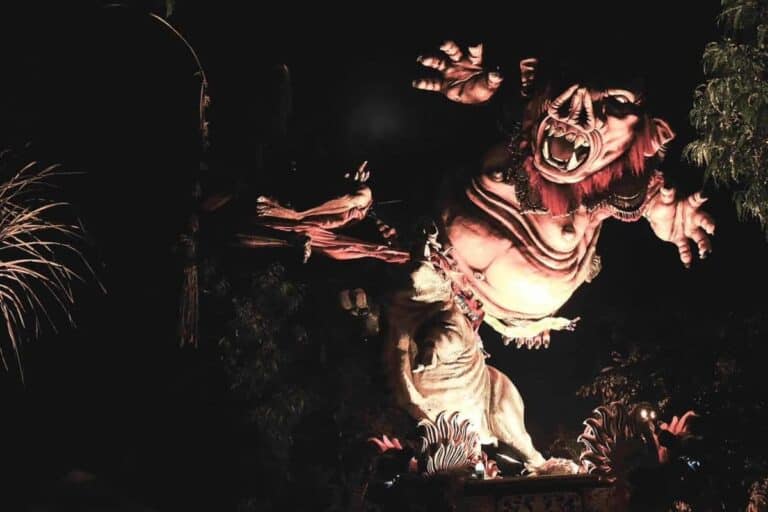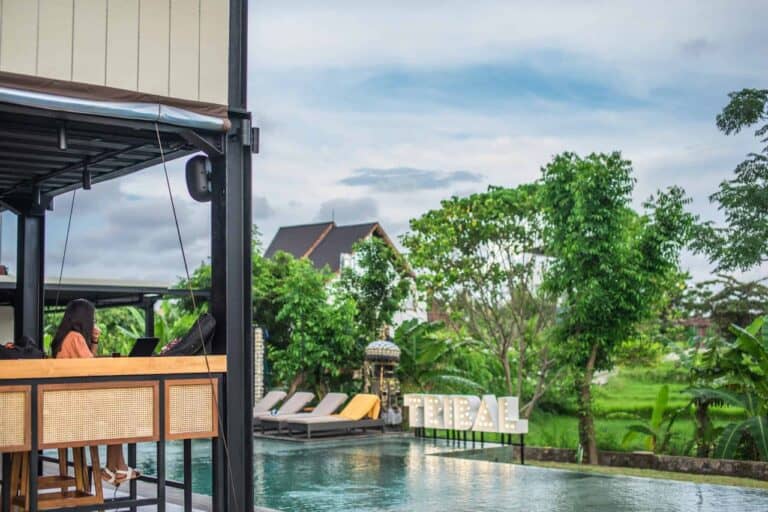One of Bali’s most magical and beautiful allures is its incredible collection of ancient Hindu temples, and stunning religious structures.
Dotted across the landscape on towering cliff sides and luscious lake sides, the majority of these temples are still actively used as a place of worship for the local Balinese Hindus.
Along with bright colours, mystical incense, handcrafted offerings and water rituals, each temple in Bali has its own god or goddess, meaning and role.
In this post I’m gonna fill you in on all the must-know information about Bali’s temples, including which ones are a must-see and how to respect the religion when visiting the sacred places.
Why Are There So Many Temples in Bali?
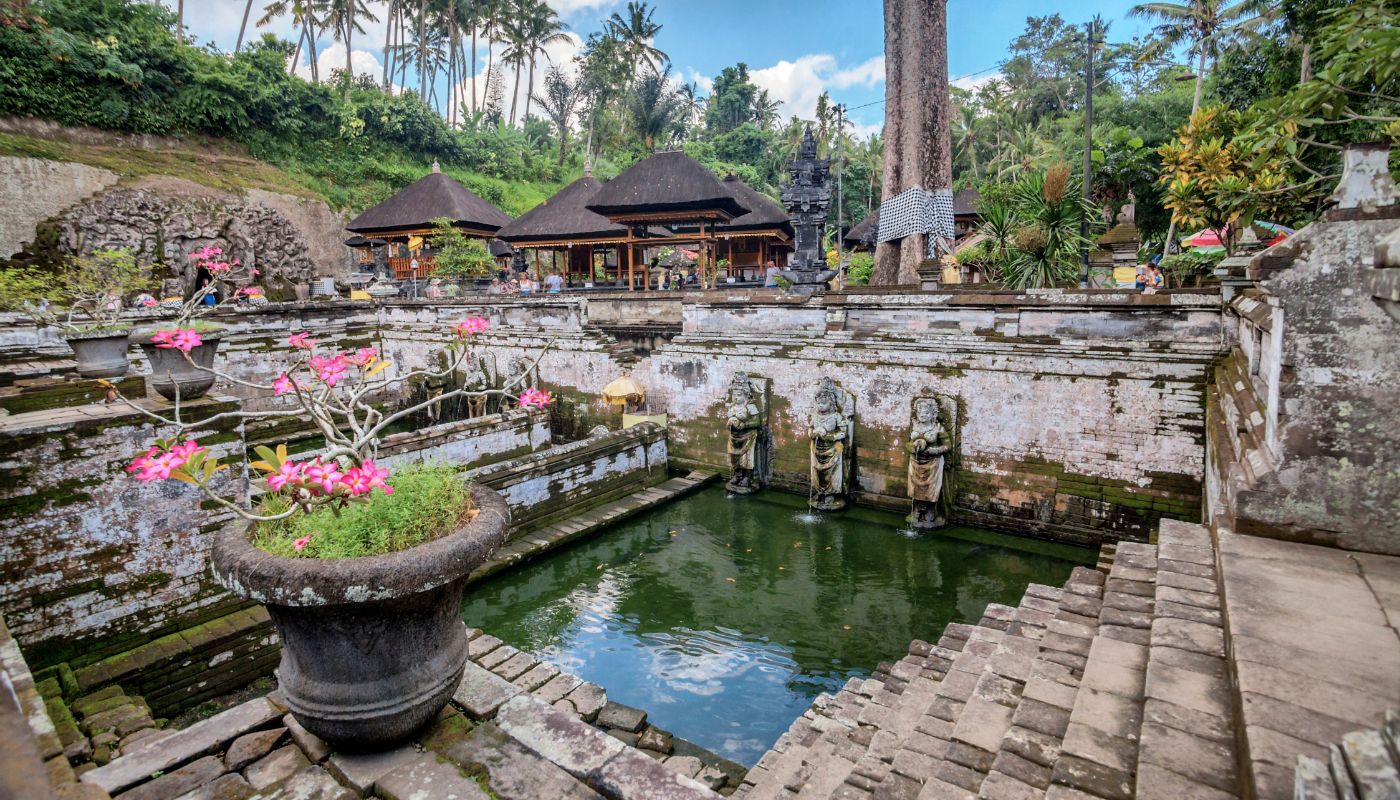
Balinese Hinduism is unlike any other religion in the world as it is a mixture of religions brought to the island over centuries and centuries of visiting priests.
The merge of these ethics and rituals has created a totally unique set of practices that other Hindus would not recognise.
As well as a multitude of ceremonies, which seem to happen weekly, the island also adopted many different levels of ‘temple’ including home shrines where the Hindus will present their daily offerings, or canang, and huge impressive ancient temples which have become tourist attractions.
With over 20,000 temples across the island, it is easy to see that ceremonies and rituals are a big part of Balinese life.
Dressed in sarongs and bright colours, the locals can be seen praying along to traditional Gamelan music, offering fruit to the gods and perhaps even being possessed by spirits.
As religion is such a big part of the day-to-day life, temples are accessible within villages, towns and even home compounds.
What to Do When Visiting Temples in Bali
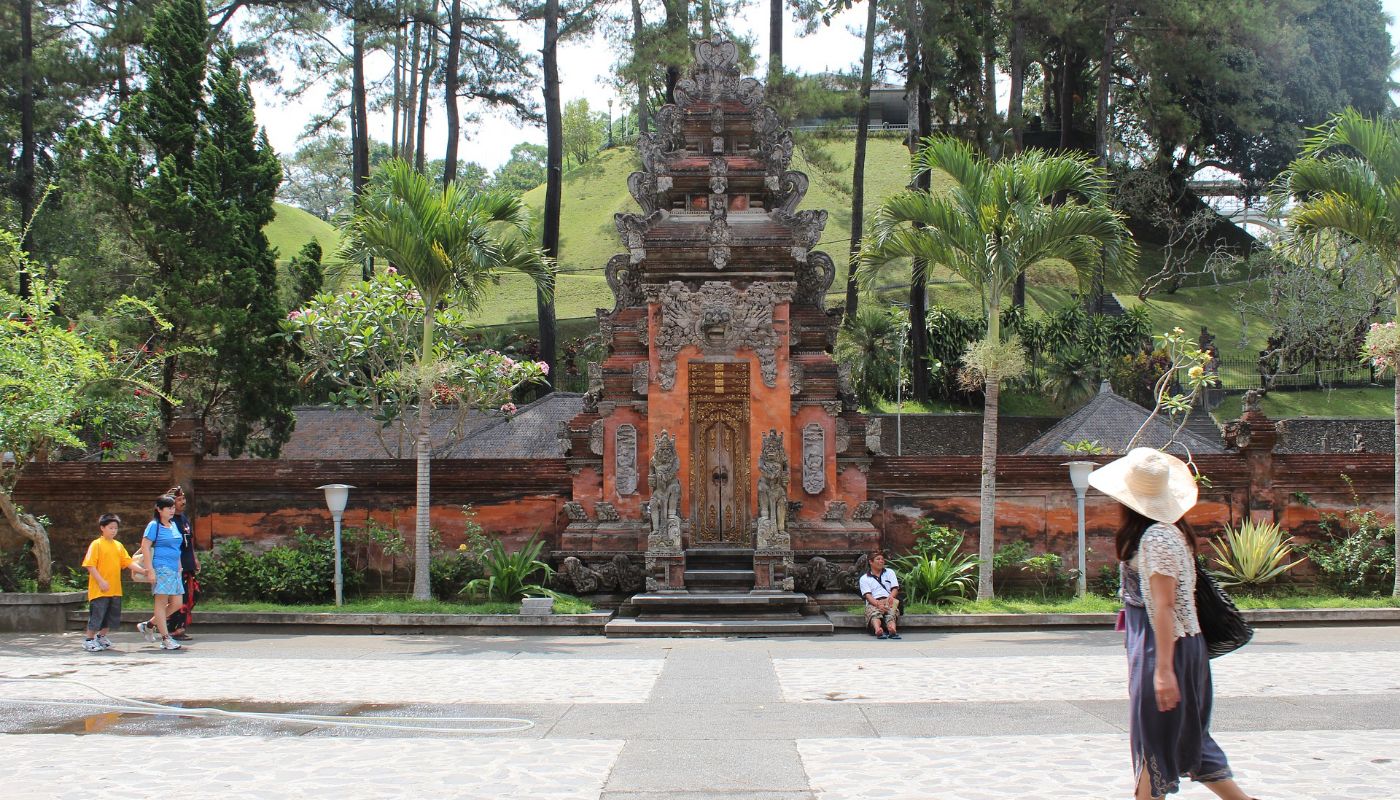
There are a few different do’s and don’ts to consider when visiting temples in Bali.
It’s not just a beautiful attraction. Many of the temples are still active places of worship where locals will come to give their offerings and pray.
Here are the most basic rules to follow when visiting one of Bali’s famous temples.
Do –
- Dress appropriately – there should be no shoulders or knees on show. You can purchase a sarong on arrival to wrap around your waist, but be prepared with a light jacket or t-shirt to throw on when exploring the temple.
- Respect the rules – some temples may have certain rules they wish you to follow such as not walking on the grass, not stepping up the pillars or not climbing. Basically, treat the temples as you would treat your own place of worship.
- Offer a donation – entrance into the temples is often very small or even free, offering a donation will go towards the up-keep and preservation of the temples.
Don’t –
- Enter when menstruating – this isn’t a sexist note or something rude, blood isn’t allowed to to be spilled in a temple. Knowing this ahead of time means you can organise your temple visits accordingly.
- Fly drones without permission – this is a rule for Bali overall. There are so many hidden accommodations and private spaces, no one takes kindly to drones without the necessary permissions. Make sure you have any permits you need before flying over a temple!
- Enter a temple without permission – if you wander past a temple on your daily walk, don’t just walk in. Some temples are private property on family compounds, they aren’t just for show.
- Take pictures of the locals without permission – although stunning, not everyone at a ceremony will appreciate having their photo taken without asking. Check before pointing your lens at the worshippers.
Follow these super simple guidelines and you will be able to immerse in the world of Balinese Hinduism without upsetting any Gods.
All the Must-Visit Temples in Bali
Tanah Lot Temple
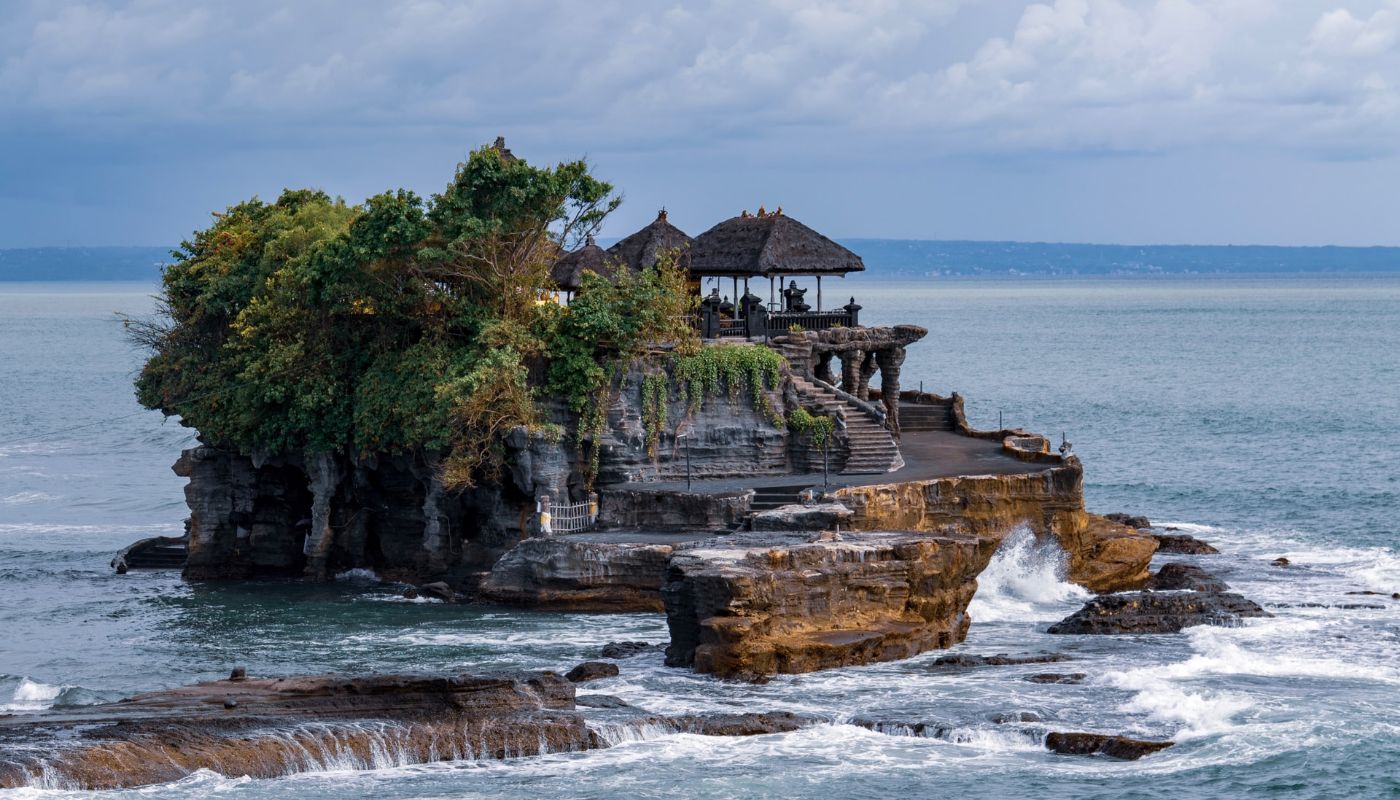
Famed for its sunset views, Tanah Lot Temple is one of the most visited temples in Bali located 30 minutes from Canggu.
As if floating on the water during high tide, the temple was built in the 16th Century after the travelling Dang Hyang Nirartha – a religious symbol – rested on the rocky island, later telling visiting fishermen that the land felt holy and should be used to worship the sea gods. Venomous sea snakes that live in the rocky caves surrounding the temple are believed to be the guards to ensure no harm comes to the holy space.
Still used till this day as a place of prayer and ceremony, on holy days you will see trails of Balinese Hindus navigating the slippery rocks to reach the temple during a low tide.
For just IDR20,000 you can visit one of the most ancient and well-known temples on the island, and the sunset view doesn’t hurt either.
Add this on to the end of your Bali day tour to have the most beautiful views.
Tirta Empul Temple

Another of Bali’s famous water temples, Tirta Empul Temple is situated on the outskirts of Ubud and is a hotspot for travelers wanting to take part in a purifying ritual (melukat).
Meaning ‘holy spring’ in Balinese, the temple has its own fresh water source.
Tirta Empul features pools of water with spouting waterfalls which each represents a different part of healing.
Stepping into the water, you allow the running water to fall over your head, reciting a mantra and cleansing. Make sure to listen to the instructions of your tour guide before entering the pool as a few of the water spouts are only to be used for death rituals.
Built between the 10th and 14th Centuries to honour Vishnu, it is one of the most important and best temples in Bali.
Besakih Temple
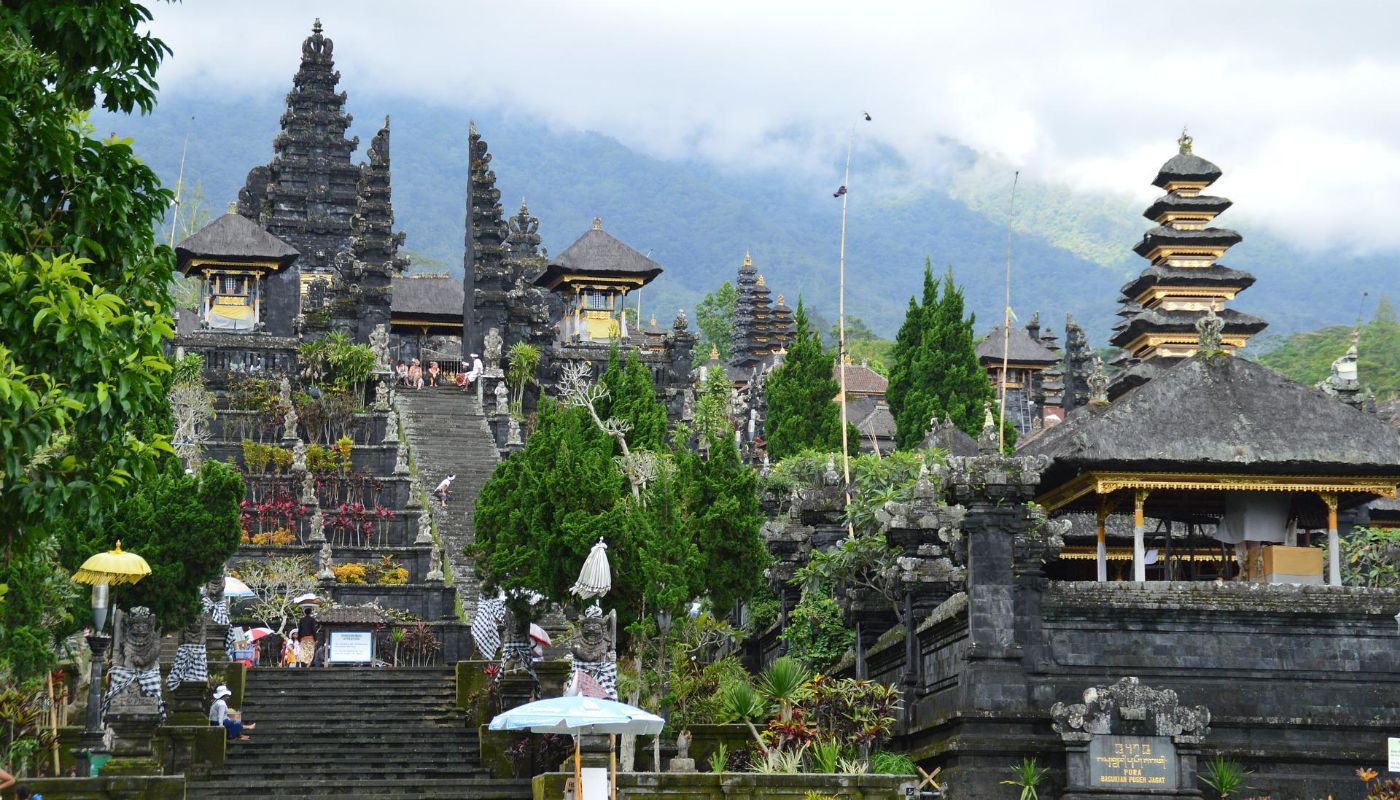
The biggest and holiest of all Bali’s temples, Besakih is considered the ‘mother temple’ of the island, and features 23 separate temples within the complex.
Sitting on the edge of Mount Agung, the temple amazingly survived the horrific 1963 volcano eruption by just meters, only increasing its beauty and magic capabilities in the eyes of local Balinese.
Each of the 23 temples within the complex represents a different God or shrine, and have their own significance and status for certain celebrations and ceremonies.
The most important is Pura Penataran Agung or the Great Temple of State.
First known to be used as a place of worship from 1284, the mystery surrounding the Besakih Temple’s history only adds to its allure.
Uluwatu Temple

I think Uluwatu Temple is my favourite because of its beautiful location.
Perched on the cliff’s edge overlooking expansive ocean views and stunning sunsets, if you are heading out to Uluwatu for the best Bali beaches, stopping by for a sunset show is a must!
One of the six most important places of worship on the island, Uluwatu Temple – or Pura Luhur Uluwatu – is one of my must-visit temples in Bali.
The scenery is incredible, and the structure is believed to date all the way back to the 11th Century! Dedicated to Sang Hyang Widhi Wasa, ‘the Divine one’, Uluwatu Temple is used by the local Balinese Hindus for special ceremonies and celebrations throughout the year.
It’s the sunset Kecak dance that really lures in the tourists. As the sun begins to set, the amphitheatre fills up and a group of men begin a traditional dance with fire and intense beating music. It is an experience you will never forget!
Saraswati Temple
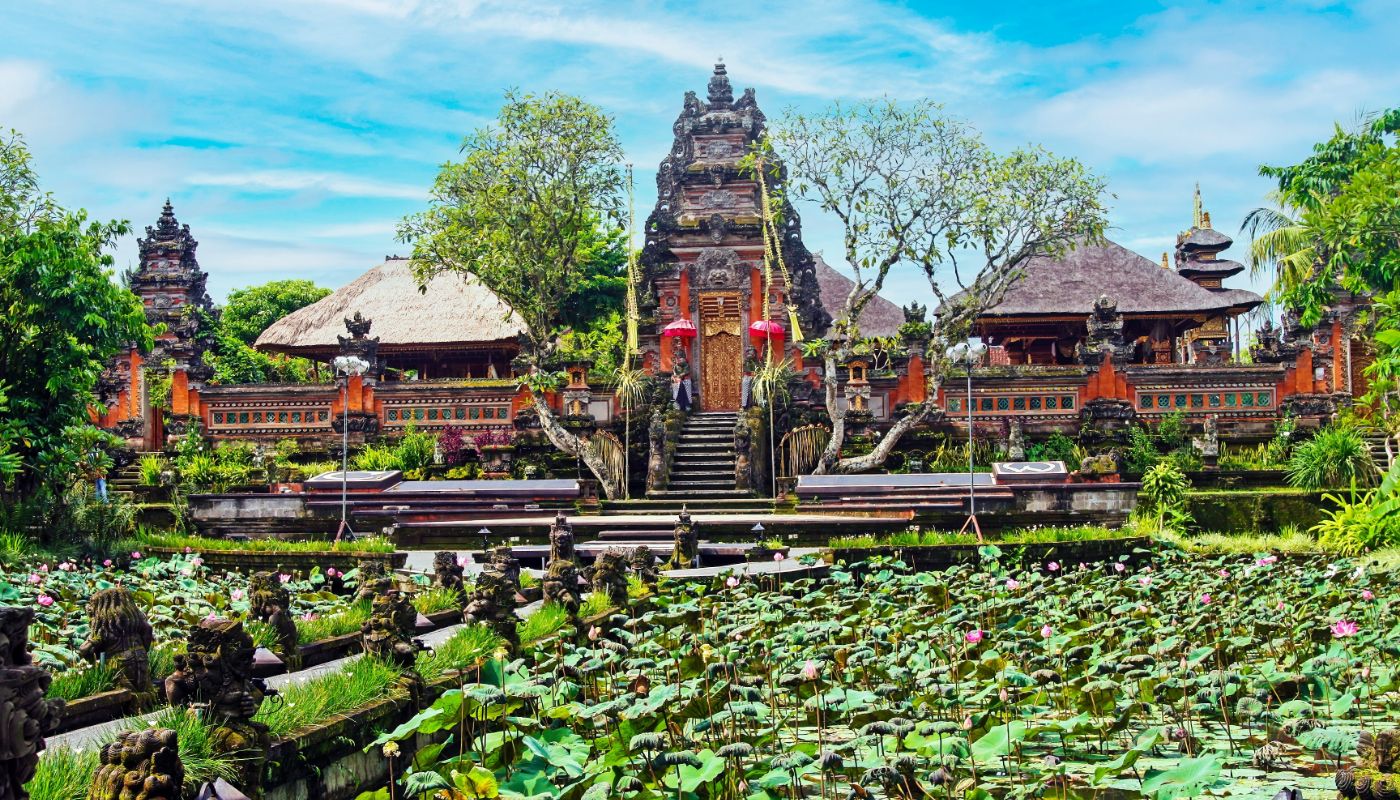
Known as the Ubud Water Palace, Saraswati Temple or Pura Taman Saraswati, this Bali temple is famous for its sprawling lily ponds.
Built in the 1950s, the temple is a place to honour the goddess Saraswati who signifies literature, art and learning.
Visitors aren’t allowed to enter the main temple, but can take pictures of the surrounding beauty and ponds.
In the heart of Ubud, it is a great stop-off point on an Ubud tour!
Spend time to explore the beautiful intricate architecture, skip across the stepping stones in the ponds and leave an offering to the goddess.
The Saraswati Temple also has an evening performance of Balinese dance every evening from 7.30pm.
Taman Ayun Temple

Located in Mengwi, Taman Ayun Temple is a UNESCO World Heritage Site built in 1632 with Chinese architectural influence and towering ancient shrines.
One of the island’s most visited temples, the vast gardens and incredible traditional style makes it a hotspot for tourists looking to immerse themselves in Balinese culture.
Translating to Beautiful Garden, Taman Ayun Temple is encompassed by luscious greenery, vast gardens and pools – which were once used as recreational spaces for the royal family.
With stunning terracotta-colour gates, if you are looking for a spot for amazing photography, this is the perfect setting.
Just 30 minutes from the centre of Canggu, it is an easy and great temple in Bali for a quick trip!
Goa Gajah Temple
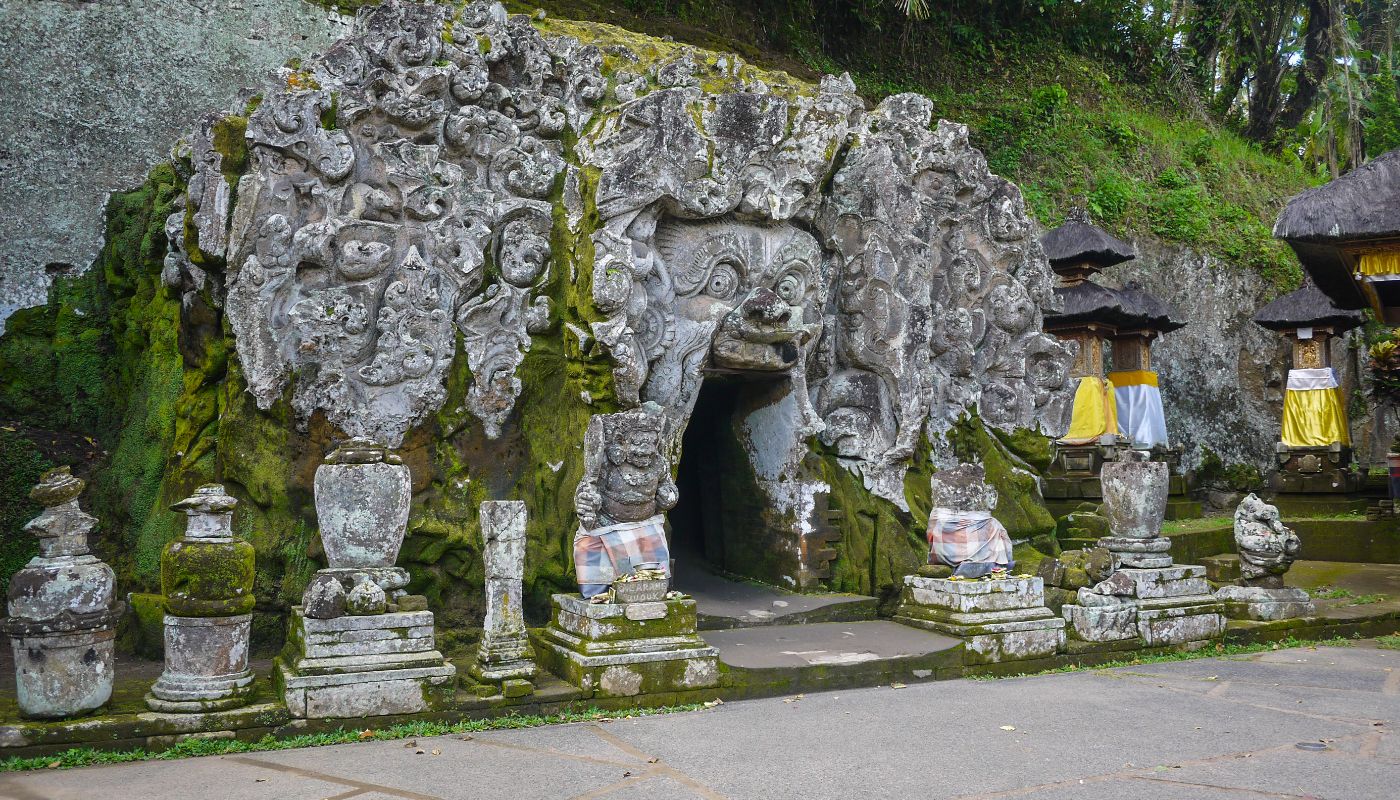
Unlike any other temples in Bali, Goa Gajah – also known as Elephant Cave – is an enclosed sanctuary of worship and meditation with both Hindu and Buddhist imagery that was believed to be created from the fingernail of the giant Kebo Iwa.
Rediscovered by the Dutch in the 1920s, the temple is a place of mystery and magic. Covered in carvings, stone figurines and statues, the Elephant Cave features bathing pools and fountains that were not found until the 1950s.
Down a staggering staircase, you will definitely want to take your time exploring this incredible Balinese temple.
Pick out threatening faces in the carvings that ward off bad spirits, and see how the environment has slowly eroded over thousands of years.
Goa Gajah shouldn’t be missed!
Ulun Danu Beratan Temple
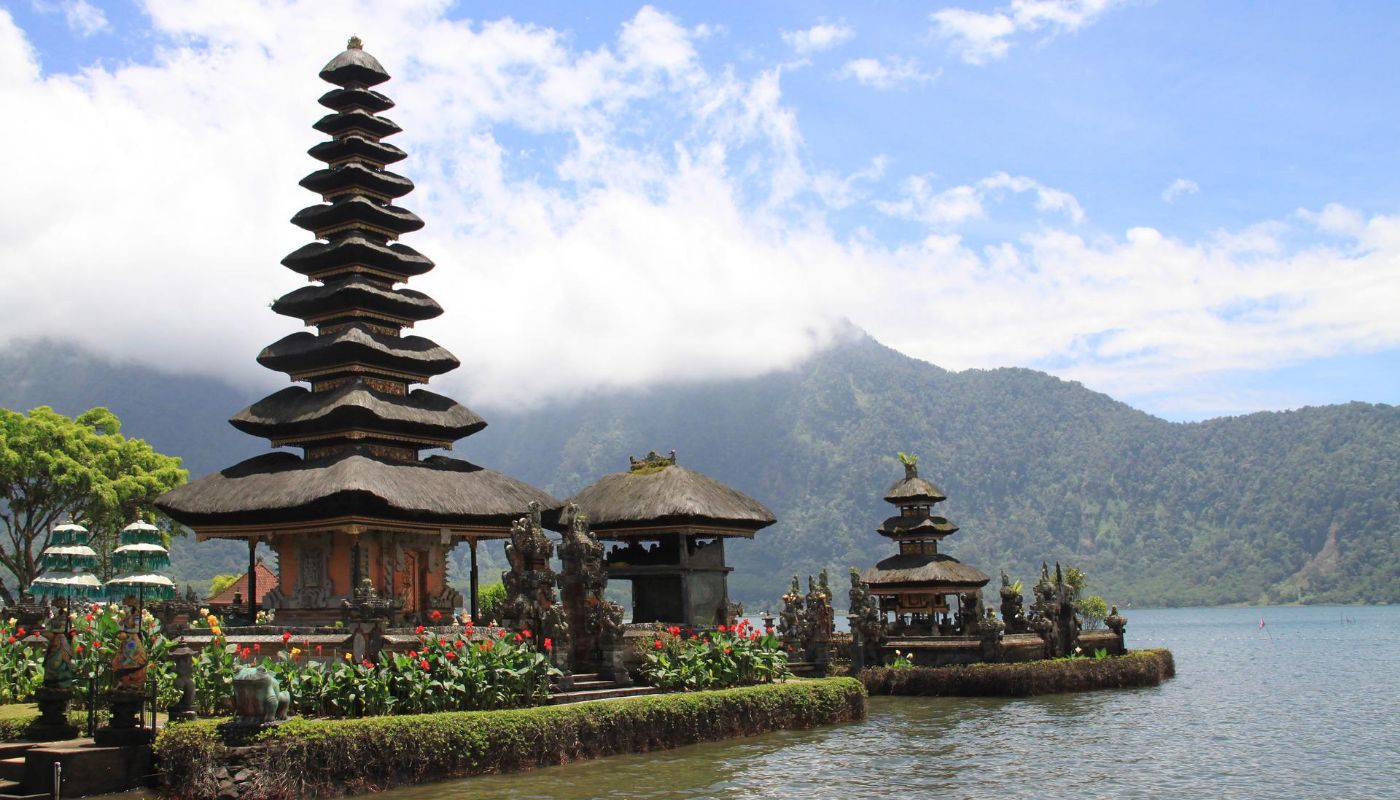
Sitting on the banks of Lake Beratan, Ulun Danu Beratan Temple is one of the most scenic water temples in Bali surrounded by rolling hills, glistening water and ancient traditional architecture.
Featuring 5 temples within the complex, Ulun Danu Beratan Temple is a dedication to the goddess Dewi Danu, the goddess of water – hence its lakeside location.
With towering platformed roofs, traditional terracotta temple colours, shrines and statues, the lake is a beautiful contrast to the still places of worship.
Filled with minor attractions for tourists such as paddle boats around the lake, children’s jungle gym and restaurant, it is one of the best temples in Bali for learning about the Balinese Hindu culture.
Goa Lawah Temple
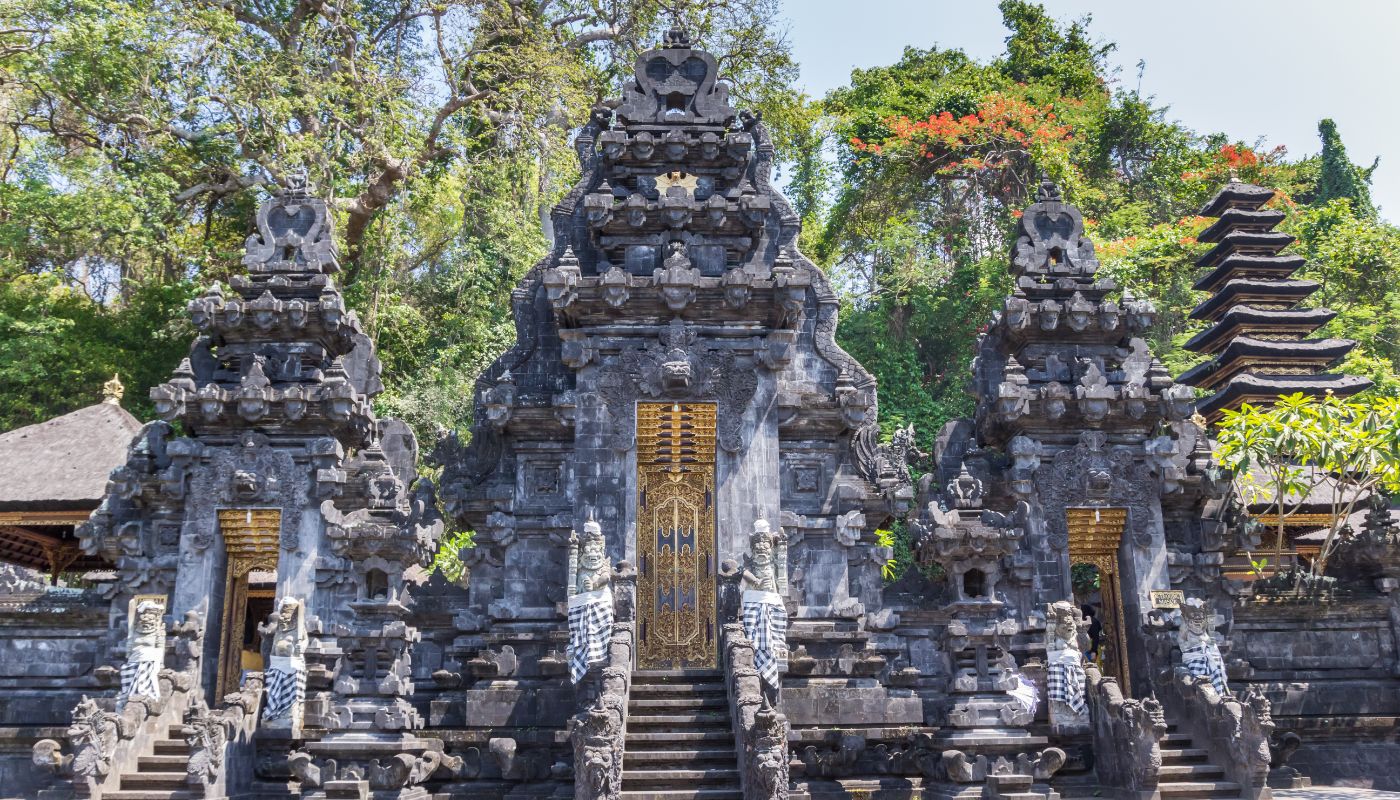
Established on the island by one of the holy priests who brought Hinduism to Bali, Goa Lawah Temple is a significant point of worship and is often referred to when speaking of the ‘holiest places in the world’.
Named after the huge population of bats that live in the cave, the Bats Cave Temple is decorated with beautiful shrines, ceramic decorations and the usual colours and offerings.
Located on the coast of Klungkung, a visit to Goa Lawah Temple is an ideal day trip for those who want to explore the lesser visited areas of the island.
Final Thoughts
If you are coming to Bali to really immerse in the culture and learn everything there is to know about the religion and histories of the island, there is no better place to learn than from the temples.
Showing the architectural, religious and cultural developments that have happened over thousands of years, the same dedication to ceremonies and the Gods and Goddesses has not changed.
Always remember to dress appropriately and respect the guidelines set out by the locals.
Exploring the magical and stunning temples of Bali is one of the best activities on the island, and will be sure to leave you with some wonderful memories.


